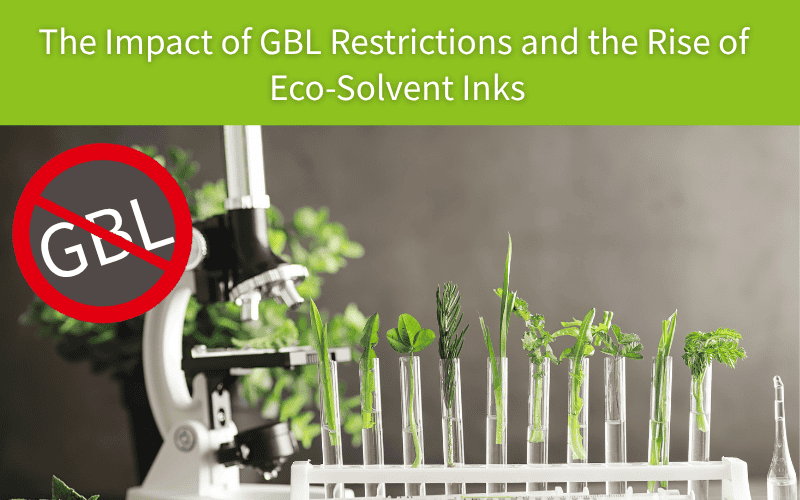

GBL (γ-Butyrolactone) is a widely used chemical solvent long applied in the production of printing inks, coatings, and cleaning agents. Its excellent solubility and stability once made it an indispensable component in ink formulations. However, as research continues to uncover the potential health and environmental risks associated with GBL, many countries have begun listing it as a controlled or prohibited chemical. This shift has reshaped its usage across the chemical industry and has pushed the printing industry to re-evaluate ink safety and sustainability.
In the printing industry, GBL is mainly used as a solvent to enhance ink fluidity and adhesion, ensuring stable and vibrant print quality. However, behind these technical advantages lie notable concerns:
Long-term exposure to GBL may cause physical discomfort, and improper handling of GBL can also contaminate water sources and soil.
.png)
As global awareness of chemical safety grows, the use of GBL is increasingly subject to strict regulation:
For printing and coating manufacturers, this means gradually phasing out GBL-containing formulations and adopting safer, regulation-compliant eco-friendly solvents and curing technologies.
Low-toxicity Solvents & Eco-Solvent Inks: To reduce dependence on high-risk chemical solvents, researchers and ink manufacturers are actively developing next-generation eco-friendly inks based on low-toxicity organic solvents. Among these, eco-solvent inks have become one of the most representative solutions. These inks commonly use solvents such as ethyl lactate and propylene glycol monomethyl ether (PM), maintaining print quality while significantly reducing emissions of volatile organic compounds (VOCs).
Key features include:
UV / LED-UV Curing Technology: Another major direction is ultraviolet curing technology. UV and LED-UV inks cure instantly under ultraviolet light without solvent evaporation, resulting in near-zero VOC emissions. These inks deliver excellent adhesion, abrasion resistance, and waterproof performance, and can be used on non-absorbent materials such as glass, metal, and plastics. UV curing is widely regarded as one of the most promising sustainable technologies for the future of printing.
Although each technology has its specific application scope, they share a common goal: reducing environmental and health burdens while enhancing sustainability in production.
(Inkpedia: – What Is Eco-Solvent Ink? Understanding Its Benefits and Applications )
With GBL bans and increasingly stringent environmental regulations, the printing industry is undergoing a structural transformation. Businesses must reassess material safety while balancing cost, quality, and sustainability. In the short term, eco-solvent inks will continue to be the mainstream choice for environmentally friendly printing with reliable performance. In the mid-to-long term, LED-UV curing technologies are expected to become the industry’s core development direction.
The trend toward eliminating GBL is not just a regulatory push—it is an important opportunity for the printing industry to transition toward sustainability. From phasing out GBL to the rise of eco-solvent, water-based, and UV technologies, printing inks are evolving toward low-pollution, high-performance, and safer solutions. For the industry, this signifies not only a materials upgrade but also the beginning of a new era in green manufacturing.